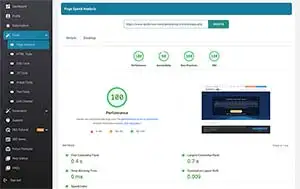What is a sitemap, and how does it relate to SEO?
A sitemap is a file that contains a list of all the pages on a website, organized in a hierarchical or structured format. In the context of SEO (Search Engine Optimization), a sitemap serves as a roadmap for search engine crawlers, helping them discover and index all the pages on a website more efficiently.
Crafting Sitemaps for SEO Success
Crafting involves creating a navigation guide for search engines and users to traverse through website's content effectively. Prioritize vital pages such as the homepage, key product/service offerings, and informative resources.
By integrating high-quality, pertinent content into sitemap, you enhance the probability of search engines ranking those pages higher in search results. Regularly updating your sitemap to reflect any changes or additions to your website's content is essential. Ensure logical organization to facilitate easy discovery and comprehension of your website's structure.
What are sitemaps in SEO and how do they impact website visibility?
In SEO, sitemaps are documents that enumerate all the URLs of a website, functioning as a guide for search engines to efficiently crawl and index the site's content. These files, typically in XML format, include critical metadata about each URL, like its last modified date and priority.
Submitting a sitemap to search engines like Google aids in streamlining the indexing process, guaranteeing the discovery and appropriate ranking of relevant pages.
Sitemaps play a pivotal role in SEO by assisting search engines in comprehending a site's structure and hierarchy, thereby enhancing its visibility and preventing valuable content from being overlooked during the crawling phase.
How can I create and submit a sitemap for my website?
To create and submit a sitemap for your website, follow these steps:
1. Generate a Sitemap: Use a sitemap generator tool or manually create an XML sitemap that lists all the URLs on your website, along with any relevant metadata.
2. Verify and Validate: Verify the accuracy and completeness of your sitemap, ensuring that all important pages are included and that the formatting is correct. Validate your sitemap using tools like Google Search Console to check for errors or issues.
3. Submit to Search Engines: Once your sitemap is ready, submit it to search engines like Google, Bing, and Yahoo through their respective webmaster tools or search console platforms. This notifies the search engines of the existence and location of your sitemap, prompting them to crawl and index your website more efficiently.
Strategies for Optimizing Sitemaps
To optimize your sitemap for SEO, consider several key strategies. Firstly, see to it that all critical pages are included, such as landing pages and product/service offerings. maximize metadata like title tags and meta descriptions to make your URLs more descriptive and compelling. Additionally, fine-tune your XML sitemap by prioritizing important URLs, setting crawl frequencies, and specifying last modified dates. Finally, don't forget to submit your sitemap to search engines like Google Search Console for recognition and crawling.
Diverse Types of Sitemaps
Sitemaps come in various types, each serving a specific purpose. The XML sitemap provids a comprehensive list of URLs for search engines to index. HTML blueprint, on the other hand, are designed for website visitors, offering a user-friendly way to handle your site's content. For websites heavy on visual media, image sitemaps list image URLs to improve indexing, while video sitemaps provide details about embedded videos.
Best Practices for Sitemap Creation
Follow these best practices to guarantee effective sitemap creation: Use a reliable sitemap generator tool to simplify the process. Make your roadmap easily accessible to both search engines and users. Regularly update it to reflect changes in your website's content. Adhere to search engine guidelines for sitemap creation to insure compatibility and effectiveness.
Enhancing Sitemap Optimization
Take your site tree optimization further with these strategies: Incorporate relevant keywords into URLs and metadata to boost search engine visibility. Prioritize mobile-friendly pages to cater to the growing number of mobile users. Monitor sitemap performance using tools like Google Search Console to identify areas for improvement. Implement advanced XML sitemap techniques like hreflang tags for internationalization and pagination tags for large websites to maximize effectiveness.










